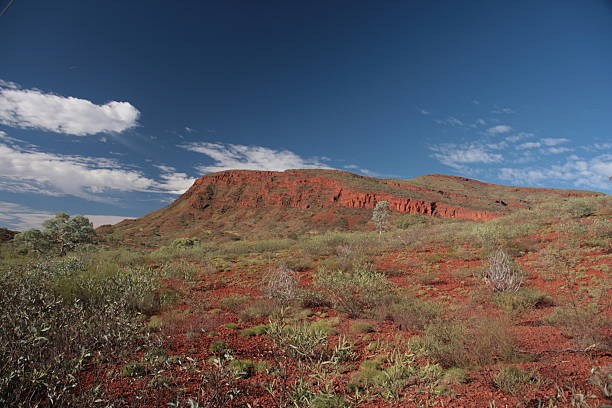Unveiling the Hidden Depths of Uluru: Discovering Australia’s Geological Marvel
When gazing at the majestic Uluru, rising starkly from the flat Australian outback, few can resist wondering how deep the roots of this sandstone giant run. Visitors on Uluru tours from Alice Springs are often captivated by tales of its immense underground presence, akin to the unseen bulk of an iceberg. In this article, we delve into the fascinating geological and cultural tapestry that weaves together the story of Uluru. What emerges is a picture of a monolithic formation far exceeding its visible grandeur, with vast proportions lying concealed beneath the Earth’s surface.
The Geological Formation of Uluru

The ancient origins of Uluru trace back over hundreds of millions of years when the sandstone that forms the monolith was deposited by sediments. These layers gradually solidified and were exposed through the slow process of geological uplift and erosion. Uluru’s distinctive composition of arkose, a coarse-grained sandstone rich in feldspar, has endured the harsh climatic conditions of the Australian desert, with its iconic bulky appearance offering clues about its formation.
The Iceberg Theory
Uluru’s striking vertical sides and smooth, rounded top evoke the iceberg imagery, where what is visible is just a small portion of a much larger structure. But the question that piques the curiosity of both geologists and tourists alike is: How much of Uluru is beneath the surface? The ‘iceberg theory’ suggests that for every visible part, there might be a much larger part that is out of sight, extending deep into the ground.
The Hidden Proportions of Uluru
Geologists have theorized that like an iceberg, the largest part of Uluru’s mass might be hidden underground. Investigations into its subterranean dimensions suggest that the monolith extends several kilometers into the Earth. While exact measurements are unobtainable without conducting invasive studies, which are prohibited due to the site’s sacred status, scientific estimates indicate that what tourists view on their trips from Alice Springs is but the tip of an immense geological structure.
Here is a table showing the estimated above-ground and below-ground proportions of Uluru, based on geological extrapolations:
| Portion of Uluru | Estimated Size |
|---|---|
| Above-ground | 3.6 km² (visible surface area) |
| Underground | More than twice the above-ground size (estimated) |
The Cultural Significance of Uluru’s Underground
The Anangu people, the traditional custodians of Uluru, have maintained a deep spiritual connection with the monolith for thousands of years. To them, Uluru represents an important aspect of the Tjukurpa—the foundation of their culture, law, and moral systems. The belief in the existence of ancestral beings within Uluru aligns with the scientific view of its vast underground presence, linking physical and metaphysical domains.
Environmental Considerations and Uluru
The environment around Uluru is as harsh as it is beautiful, with extreme temperatures and sporadic rainfall shaping the rock’s surface and, potentially, its underground contours. The conservation efforts by park management ensure that the delicate balance of the local ecosystem is maintained, preserving Uluru’s underground complexity for future generations.
Uluru’s Size in Comparison
To truly appreciate Uluru’s grandeur, it’s insightful to compare it with other known geological landmarks:
- Great Pyramid of Giza: While the Pyramid stands at 146.6 meters above ground, Uluru reaches 348 meters in height and extends much further below ground.
- Eiffel Tower: Although the Tower is taller at 300 meters, Uluru’s underground portion dwarfs the total volume of the Parisian landmark.
The Ongoing Research at Uluru
Scientists continue to explore the extents of Uluru using non-invasive technology. By carefully examining the seismic data and employing the latest in remote sensing techniques, researchers are gradually providing a clearer picture of Uluru’s subterranean profile. This work not only fascinates geologists but also adds depth to the already rich narrative cherished by those who visit and appreciate this wonder.
Conclusion
As tourists make their journey on Uluru tours from Alice Springs, they encounter a natural wonder that captures both the eye and the imagination. Groundbreaking research intertwined with deep cultural narratives remind us that Uluru offers far more than meets the eye. This fascinating, deeply rooted rock formation stands as a testament to the intricate tapestry of our planet’s geological history and the profound cultural significance it holds for the Indigenous people of Australia.
FAQs
Q1: What exactly is Uluru?
A1: Uluru, also known as Ayers Rock, is a massive sandstone monolith located in the heart of the Northern Territory in Australia. It is sacred to the Indigenous Anangu people and is a popular tourist attraction known for its arresting red hue and historical significance.
Q2: How much of Uluru is estimated to be underground?
A2: While it’s challenging to ascertain precise measurements, some geologists estimate that at least two-thirds of Uluru could be beneath the surface. This is based on its visible slope and geological projections of the rock’s shape extending into the earth.
Q3: Why is it difficult to determine the exact size of Uluru’s underground portion?
A3: Due to the sacred nature of Uluru and respect for Indigenous cultural beliefs, intrusive geological surveying methods, like drilling, are not conducted. Therefore, scientists rely on non-invasive techniques such as seismic readings, which provide estimates but not definitive measurements.
Q4: How was Uluru formed?
A4: Uluru was formed over 500 million years ago when sediment from the Petermann Ranges was deposited into an ancient sea. Over time, the sediment compressed into rock and then, through tectonic activity, tilted and rose to the surface, creating the monolith we see today.
Q5: Is it allowed to climb Uluru?
A5: Climbing Uluru was officially banned in October 2019, in accordance with the wishes of the Anangu people for whom the site is sacred. Visitors are encouraged to respect the cultural significance of Uluru and enjoy it from the ground.